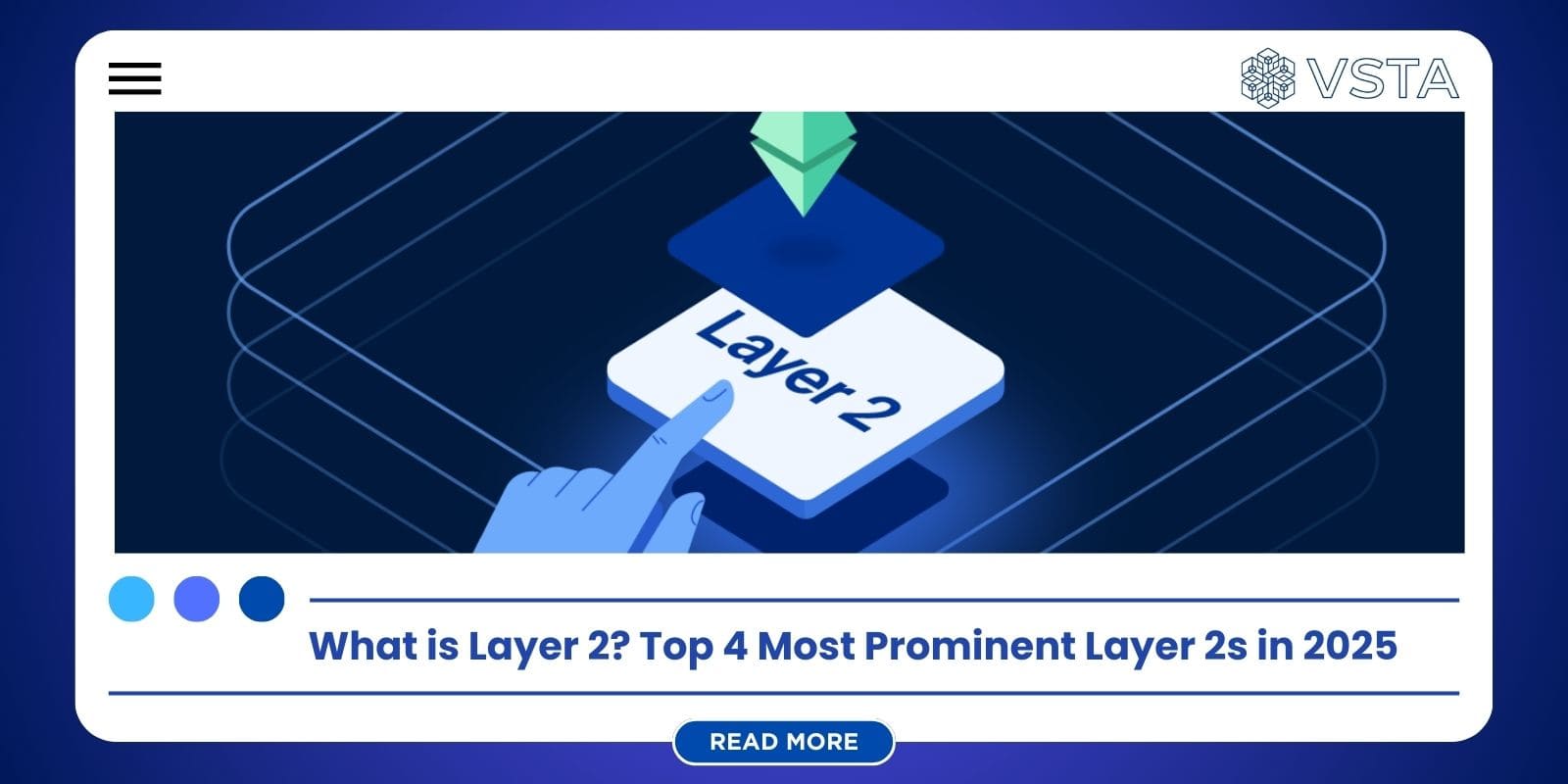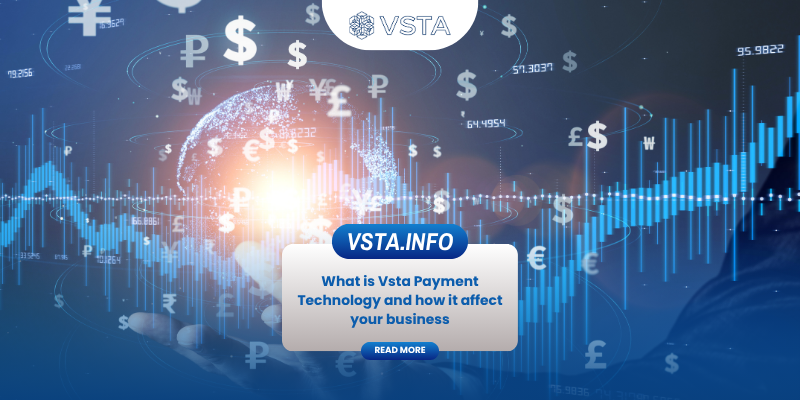What is Layer 2? Why is Layer 2 Necessary in Vesta Finance (VSTA)?. This is one of the areas attracting strong attention from crypto investors in 2025. The rapid growth of Layer 2 projects clearly demonstrates this trend. So, what exactly is Layer 2 and what problems does it solve? Let’s explore the details with VSTA in the following article.
Overview of Layer 2
What is Layer 2?
Layer 2 is a crypto term referring to scaling solutions built on Layer 1 blockchains with the purpose of increasing transaction efficiency, reducing fees, and improving user experience.
L2 solutions operate alongside L1, helping to overcome the limitations faced by the base layer. They function independently, supporting transaction processes to occur simultaneously without negatively affecting the structure or integrity of the underlying Layer 1 blockchain.
The History and Development of Layer 2
When answering the question what is layer 2, it’s important to understand its history. Layer 2 emerged in the early days of blockchain technology, when Bitcoin faced scalability challenges due to a sudden surge in transaction volume. Since then, several key milestones have shaped its development:
- 2015: The launch of the Lightning Network as a Layer 2 solution for Bitcoin. It introduced separate payment channels to process off-chain transactions, thereby reducing network load, increasing speed, and lowering fees.
- 2017: Plasma was announced as a Layer 2 solution for Ethereum. It used child chains to handle off-chain transactions, with the final results later recorded on Ethereum.
- 2018: State Channels were introduced, enabling parties to open private payment channels for off-chain transactions. This reduced reliance on the main network and improved efficiency.
- 2020: Optimistic Rollups were introduced, aggregating multiple transactions into a single batch and verifying fraud in case of suspicious behavior. Meanwhile, ZK Rollups applied zk-SNARK proofs to validate off-chain transactions without revealing the underlying data.
- 2024: Layer 2 solutions are now being developed and applied across multiple blockchains. With their ability to address scalability and cost-efficiency issues, Layer 2 plays a crucial role in promoting real-world blockchain adoption, paving the way for stronger growth of blockchain in the future.
- 2025: Thanks to the Dencun/Pectra upgrade, transaction costs on Layer 2 have been significantly reduced. This creates a favorable environment for DeFi applications, stablecoins, NFTs, and blockchain games to expand. Both users and developers are gradually shifting from Layer 1 to Layer 2 due to its faster speed and lower costs, while still maintaining the inherited security of Ethereum.
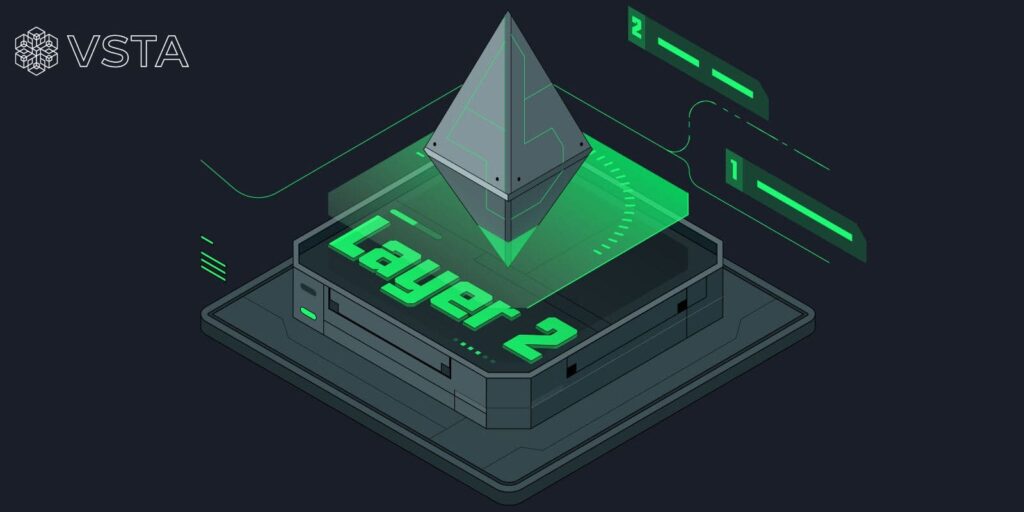
Why is Layer 2 Necessary in Vesta Finance (VSTA)?
Many people still mistakenly believe that Layer 2 solutions are exclusive to Ethereum because of the success and attention it has gained. However, understanding what is layer 2 also means recognizing that it addresses the common limitations of high fees and network congestion users face during peak transaction times.
In reality, not only Ethereum but also Bitcoin can process only about 7 transactions per second on average. Other blockchains such as Vesta Finance, BNB Chain, Polygon and Avalanche also frequently encounter similar congestion issues. These challenges create a strong demand for scalability solutions where Layer 2 stands out as one of the most effective approaches to solving these problems.
What Problems Does Layer 2 Solve for VSTA?
When learning what is layer 2, it’s clear that these solutions share common characteristics designed to address the following issues:
- Enhanced transaction processing: Layer 2 increases transaction throughput, reduces delays, and improves bandwidth. This helps overcome bottlenecks during trading activities.
- Lower costs: Layer 2 reduces user fees through various mechanisms, making adoption and usage more attractive.
- Security and decentralization preservation: To fully understand what is layer 2, it’s important to see how it preserves the security and decentralization of Layer 1 while improving scalability across the network.
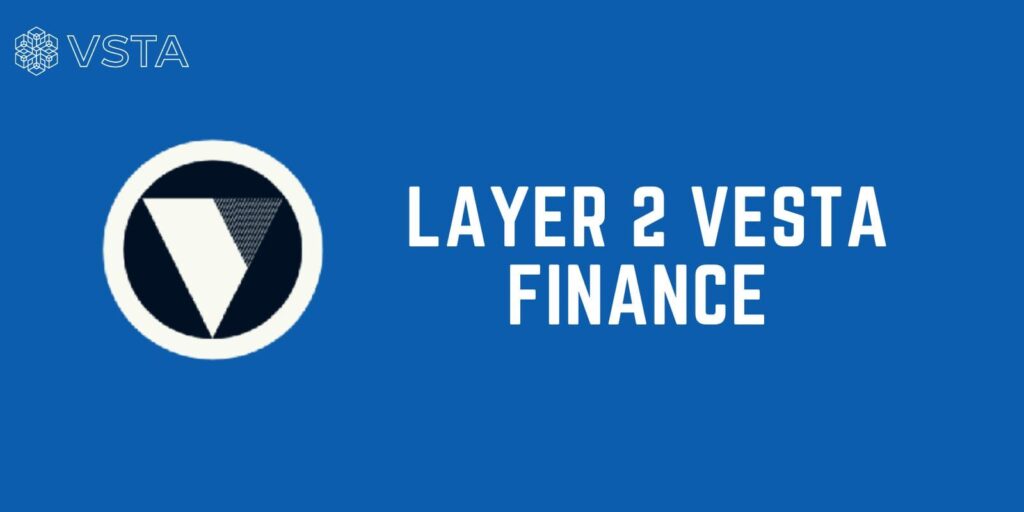
Top 5 Outstanding Layer 2 Projects in 2025
If you’re searching for what is layer 2 in practice, below are the top 5 Layer 2 projects in 2025 that you definitely should know about and not miss.
Vesta Finance (VSTA)
Vesta Finance is built on Arbitrum, a Layer 2 solution for Ethereum. This means that all activities such as collateralization, minting VST, liquidation, and payments take place on Layer 2, with secured data then recorded on Ethereum Layer 1.
VSTA chose Layer 2 because it offers significantly lower transaction fees, costing only a fraction of the gas fees compared to Ethereum mainnet. Lending and decentralized payment transactions are processed quickly, making it highly suitable for DeFi needs. For anyone wondering what is layer 2, Arbitrum shows how it can reduce costs while still relying on Ethereum for security and fraud prevention. At the same time, it allows Vesta to support multiple collateral types, expand liquidity, and avoid network congestion.
Arbitrum
Arbitrum is a Layer 2 project that enhances the speed and scalability of Ethereum smart contracts by applying Optimistic Rollups technology. At the same time, this solution introduces additional advanced security features during execution. As an Ethereum Virtual Machine (EVM)-compatible Layer 2 solution, Arbitrum has attracted strong adoption from numerous DeFi and NFT platforms.
The project was developed by Offchain Labs, a blockchain research and development company headquartered in New York, USA.
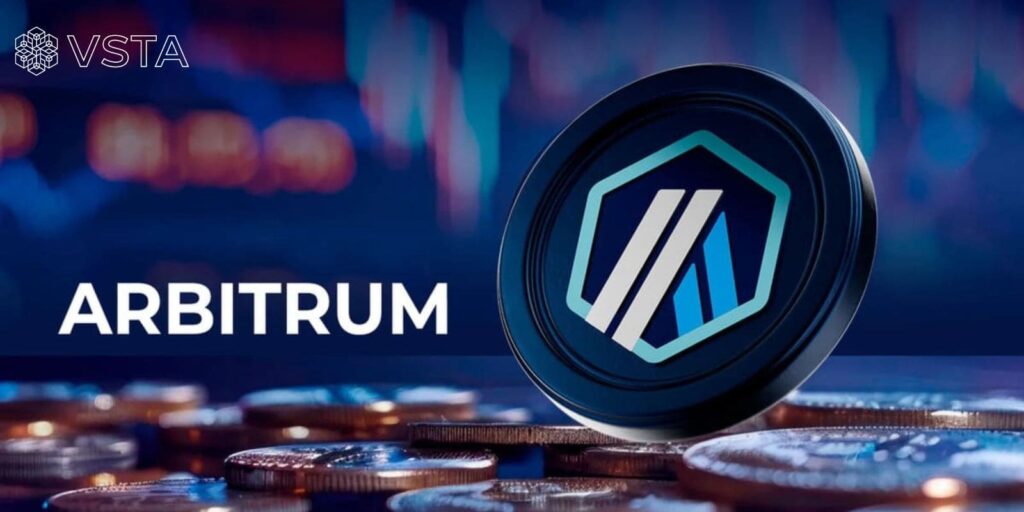
Optimism
Optimism is a Layer 2 project that applies Optimistic Rollups technology, focusing on scaling Ethereum and supporting decentralized applications (dApps). The technology was developed by the Optimism Foundation, a non-profit organization based in San Francisco, USA.
Overview of zkSync
zkSync is a Layer 2 solution based on ZK-Rollups technology on the Ethereum network, founded by Matter Labs. The project has received strong support from major investment funds including a16z, OKX, Crypto.com, Bybit, and ConsenSys, with a total of USD 458 million successfully raised.
StarkNet
StarkNet is a groundbreaking Layer 2 solution on Ethereum that uses ZK-Rollups (STARK) technology. It enables dApp developers to build without performance constraints while maintaining the security inherited from the Ethereum ecosystem.
Conclusion
Layer 2 is an essential solution for scaling Layer 1 blockchains to achieve greater capacity. In the future, the competition among Layer 2 solutions is expected to become even more dynamic. Follow VSTA to stay updated with the latest insights and valuable knowledge in the investment field.
